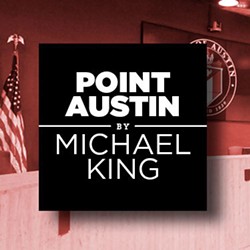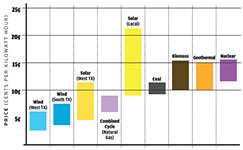Point Austin: Dear Occupant
Austin welcomes all newcomers – but we don't know where to put them
By Michael King, Fri., Feb. 21, 2014

Very late last Thursday – indeed very early Friday – a visibly and audibly exhausted City Council voted to pass, on first reading only, a lowered limit on occupancy (four "unrelated" residents vs. the current six) in certain single-family-zoned residential neighborhoods ... for the next two years. It's hardly a finished proposition; the proposal is scheduled to return to Council in late March, and considering the floor and dais discussion, it may well await further research from staff and the "Stealth Dorm Working Group" – which has been laboring away on the subject for a couple of years without a resolution.
The restricted neighborhood area, and the two-year sunset provision, are both signs that the Council is not firmly convinced that the ordinance is a terrific idea. Add to that the "grandfathering" provision – existing structures with more than four unrelated residents would not be affected – and there's a good argument that the ordinance is little more than a symbolic gesture unlikely to please either side: those who describe it as absolutely necessary to "stop the bleeding" of single-family homes from near-university neighborhoods, or those who describe it as the death-knell to Austin's "weird" character as well as the final blow to affordable housing in the central city.
As the "stealth dorm" moniker suggests, the targeted dwellings are primarily purpose-built rental houses with multiple bedrooms, constructed in recent years in single-family residential neighborhoods relatively near the UT-Austin campus. An in-fill developer buys and scrapes a single-family home, and (staying within city code) replaces it with a houselike structure designed to accommodate anywhere from six (legally) to 12 (illegally) renters in tiny bedrooms, with individual rents $1,000/month or more. The Northfield Neighborhood Association (north of 51st, between Airport and Lamar boulevards), prominent in this controversy, counts "more than 50" such structures within its boundaries.
The Missing Middle
Thursday night's discussion (nearly three hours, beginning about 11:30) was highly instructive in echoing the ongoing Austin debates about affordability and neighborhood character. Advocates of the measure argued that single-family neighborhoods are being overwhelmed by investor/developers with no permanent commitment to the neighborhoods, rather looking for a quick, rent-raising buck. Opponents described the proposal as discriminatory against students or unconventional families (or even just groups of friends), and as inevitably driving up rents by restricting supply. A few (including Council Member Bill Spelman, in the end the sole negative vote) pointed out that a four-person limit will be equally as unenforceable as the current six-person limit – and really beside the point of the sort of code violations (e.g., excessive trash, parking, and noise) that are the source of most neighborhood complaints.
The arguments ranged from the profane ("these homeowners are just bigots who don't want to talk to their neighbors") to the abstract ("the available data simply do not reflect that this is a serious problem"), but it was possible to land right on top of the picket fence in terms of any solution. Yes, a person living near a university should expect to encounter young, occasionally rambunctious neighbors; and yes, living near a university should not inevitably mean that you abruptly find your bungalow surrounded by enormous fraternity-satellite party houses.
Council Member Chris Riley, making the initial (and much-amended) motion for the new ordinance, noted that the real problem is that Austin's housing code does not readily "accommodate the housing demand that we know is out there," and more specifically, does not readily enable "the missing middle" of housing options between large, corridor-based, multifamily developments and single-family homes. Right as he was, it never became clear how the proposition on the table, meritorious or not, is supposed to advance that middling cause.
At – but Not in – Austin
This already limited proposal is going to get folded, stapled, and mutilated quite a bit more before it gets codified, and I wouldn't be surprised if those awaiting the 10-1 Valhalla will subsequently discover this particular problem will be even more greatly polarized by district representation – a crisis to some neighborhoods, a bore to others. The 6-1 Council vote appeared very soft and flexible, with at least a couple of members voting "aye" on particular aspects primarily because they understood this was only a preliminary vote.
It also seems worth noting that in addition to the "missing middle" of city housing, there's another Very Major Player missing from this housing discussion: the University of Texas. A generation ago, the UT Board of Regents explicitly allowed enrollment to explode while simultaneously declining to substantially expand on-campus student housing. That was no doubt a boon to corporate owners of West Campus real estate, and my guess is very few of those folks live anywhere near the neighborhoods upon which they have been so eager to impose both enormous, high-rise, private dormitories (thanks, regents!) and house-like structures more accurately described as rent-a-bed student flophouses.
There is now some buzz that UT is finally reconsidering its policy on campus student housing; true or not, certainly the captive market is already on hand.
Allowing for all this, those central city neighborhood associations which have historically fought nearby multifamily projects – for reasons good and bad – need to realize that an inevitable side effect is the driving-up of residential land values in the same neighborhoods, and, consequently, enormous market pressure to replace single-family homes with larger, more lucrative structures. In the long term, zoning codes can only work with the consent of the zoned – and Austin's renters must be permanent participants in the neighborhood conversation.
Got something to say on the subject? Send a letter to the editor.










